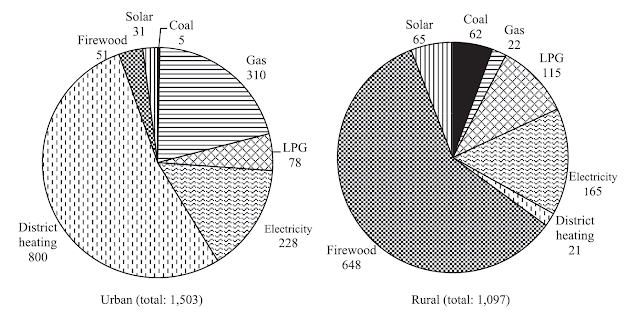China’s environmental law system first established with the passage of the Environmental Protection Law (for Trial Implementation, 1979). In 1987, the Air Pollution Prevention and Control Law (APPCL) was promulgated. It was then revised twice in 1995 and 2000. The APPCL 2000 focused on regulating SO2 and coarse particles emissions (Feng and Liao, 2015; Zhao, n.d.).
In addition to legislation, prevention and control of air pollution has also been embodied in state development plans developed every five years, a system inherited from the former Soviet Union and a relic of the planned economy era. The plans originally focused on economic development only, yet in recent years, much attention has also been given to social development and environmental protection (The Economist, 2015). The 10th five-year plan (2000-2005) included emissions reduction targets for the first time: 10% reduction of SO2 emissions from the 2000 level by 2005. The target was repeated in the the 11th five-year plan, as it failed during the previous period (Schreifels et al., 2012; cited in Saikawa, 2014). To meet this goal, flue gas desulfurisation was highly promoted in thermal power plants, experiencing a growth from 12% in 2005 to 82% in 2010. As a result, SO2 emissions decreased by 29% despite the 50% increase in coal consumption in the energy sector (Wang et al., 2012). The 12th five-year plan (2011-2015) included, apart from targets on further reduction of SO2 emissions (8% below 2010 levels), targets on NOx emissions reduction (10%) and carbon intensity reduction (17%) for the first time (Saikawa, 2014). Much hope has been placed on similar end-of-pipe technologies such as selective catalytic reduction and selective noncatalytic reduction (both are denitrification methods) (Wang et al., 2012).
It is also during the implementation period of this five-year plan that air pollution has became a major concern among Chinese people. It all started with the widespread of hourly air quality reports by the US Embassy in Beijing on Chinese internet, as the reading of PM2.5 concentrations went “beyond index” (IAQI>500) in November 2010 for the first time since monitoring established in 2008 (The New York Times, 2013).
Mounting public concern fuelled new policies. In 2012, the first standards for PM2.5 concentrations were approved (see a previous post). In the same year, a five-year plan specifically devoted to improving air quality in three key regions and ten city clusters was issued: the 12th Five-year Plan on Air Pollution Prevention and Control in Key Regions (click here for full text; English version). The plan set binding ambient concentration targets for SO2, NO2, PM10 and PM2.5 for the first time as well as more ambitious emissions reduction targets than the national targets. It also introduced concrete measures in detailed projects (Clean Air Alliance China, 2014).
In 2013 the government further announced the Action Plan on Prevention and Control of Air Pollution (click here for full text; English version) with stricter standards, higher targets and concrete timetables, summarised in the following figure. Key points are:
a) to reduce urban concentrations of PM10 by 10% by 2017 on the 2012 levels nationwide and concentrations of PM2.5 by 25%, 20% and 10% in three key regions Beijing-Tianjin-Hebei, Yangtze River Delta and the Pearl River Delta respectively;
b) to decrease the share of coal in total energy consumption to below 65% from around 67% in 2012 (Finamore, 2013) and increase the coal washing rate to above 70% by 2017, to prohibit the approval of new coal-fired power plants and to peak and decline coal consumption in three key regions;
c) to provide National Stage V gasoline and diesel and eliminate “yellow-label” vehicles (old, high-emitting vehicles that fall under China I emission standard (gasoline) or China III emission standard (diesel)) by no later than 2017;
d) to complete the backward productivity elimination target required in the “12th Five-Year Plan” one year ahead (by 2014) in iron and steel, cement, electrolytic aluminum, glass etc. 21 key industries and to eliminate another 15 million tons of backward productivity in iron making, 15 million tons in steel making, 100 million tons in cement and 20 million weight cases of glass in 2015.
Source: China Daily, 2013.
To provide legal basis for the action plan, the revised APPCL was passed in this August and will enter into force in Jan 1, 2016. Major amendments include the first acknowledgement of the cost of air pollution on public health, a new framework for regional air quality management and coordination (emphasis on the responsibility of local governments) (Cai and Tang, 2015), an alert system on bad weather conditions that worsen smog as well as regulations on emissions from shipping (Liu, 2015).
The post provides an overview of China’s legislative framework and current policies to tackle air pollution. Next time, we will examine these critically and discuss further possible strategies.













